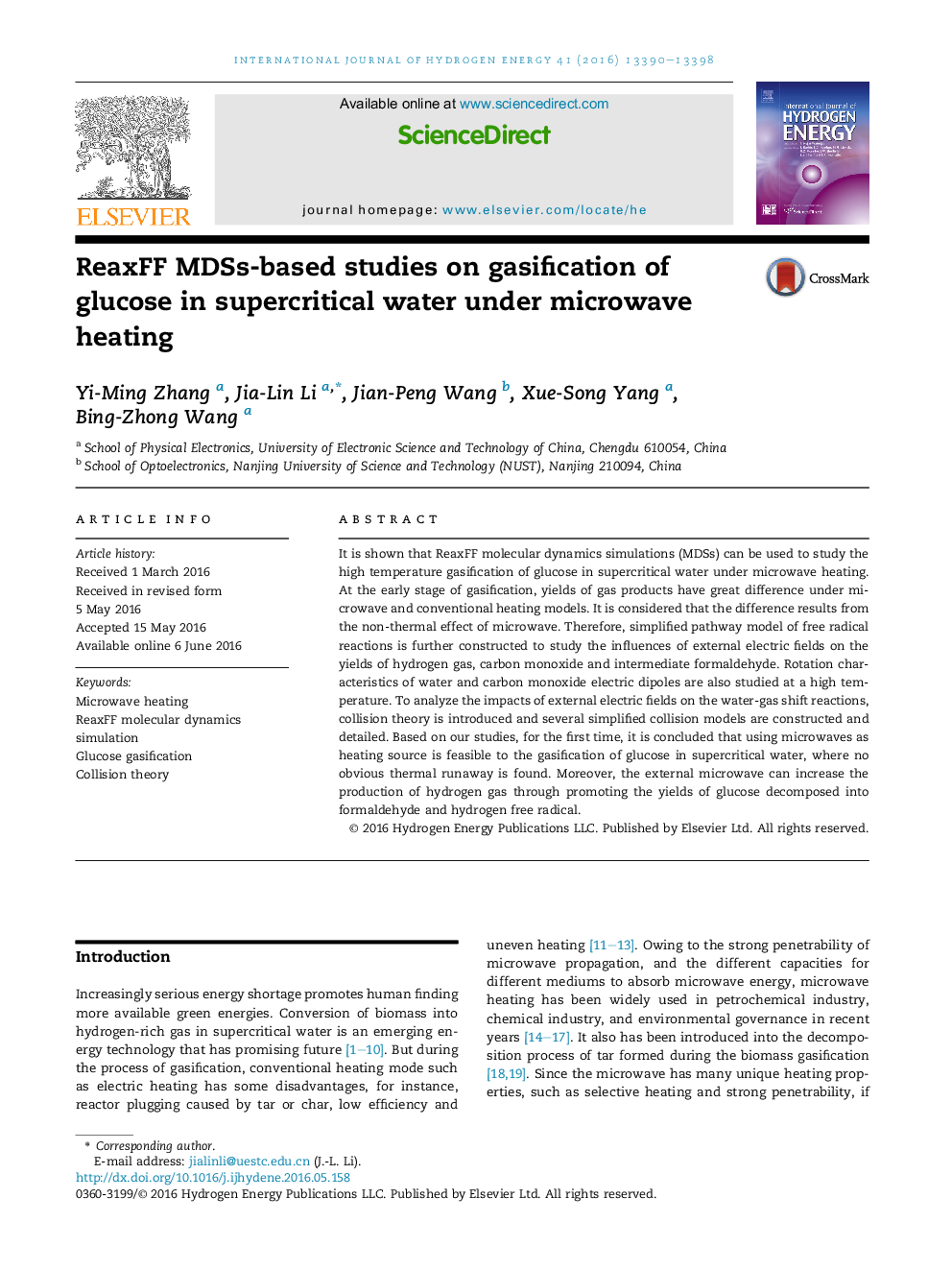| Article ID | Journal | Published Year | Pages | File Type |
|---|---|---|---|---|
| 1276452 | International Journal of Hydrogen Energy | 2016 | 9 Pages |
•ReaxFF MDs is firstly used to study the glucose gasification in supercritical water.•Using microwave as heating source is theoretically feasible during the gasification.•Collision theory is employed and simplified collision models are constructed.•External microwaves influence the reaction rate of the water-gas shift reaction.
It is shown that ReaxFF molecular dynamics simulations (MDSs) can be used to study the high temperature gasification of glucose in supercritical water under microwave heating. At the early stage of gasification, yields of gas products have great difference under microwave and conventional heating models. It is considered that the difference results from the non-thermal effect of microwave. Therefore, simplified pathway model of free radical reactions is further constructed to study the influences of external electric fields on the yields of hydrogen gas, carbon monoxide and intermediate formaldehyde. Rotation characteristics of water and carbon monoxide electric dipoles are also studied at a high temperature. To analyze the impacts of external electric fields on the water-gas shift reactions, collision theory is introduced and several simplified collision models are constructed and detailed. Based on our studies, for the first time, it is concluded that using microwaves as heating source is feasible to the gasification of glucose in supercritical water, where no obvious thermal runaway is found. Moreover, the external microwave can increase the production of hydrogen gas through promoting the yields of glucose decomposed into formaldehyde and hydrogen free radical.
Graphical abstractFigure optionsDownload full-size imageDownload as PowerPoint slide
